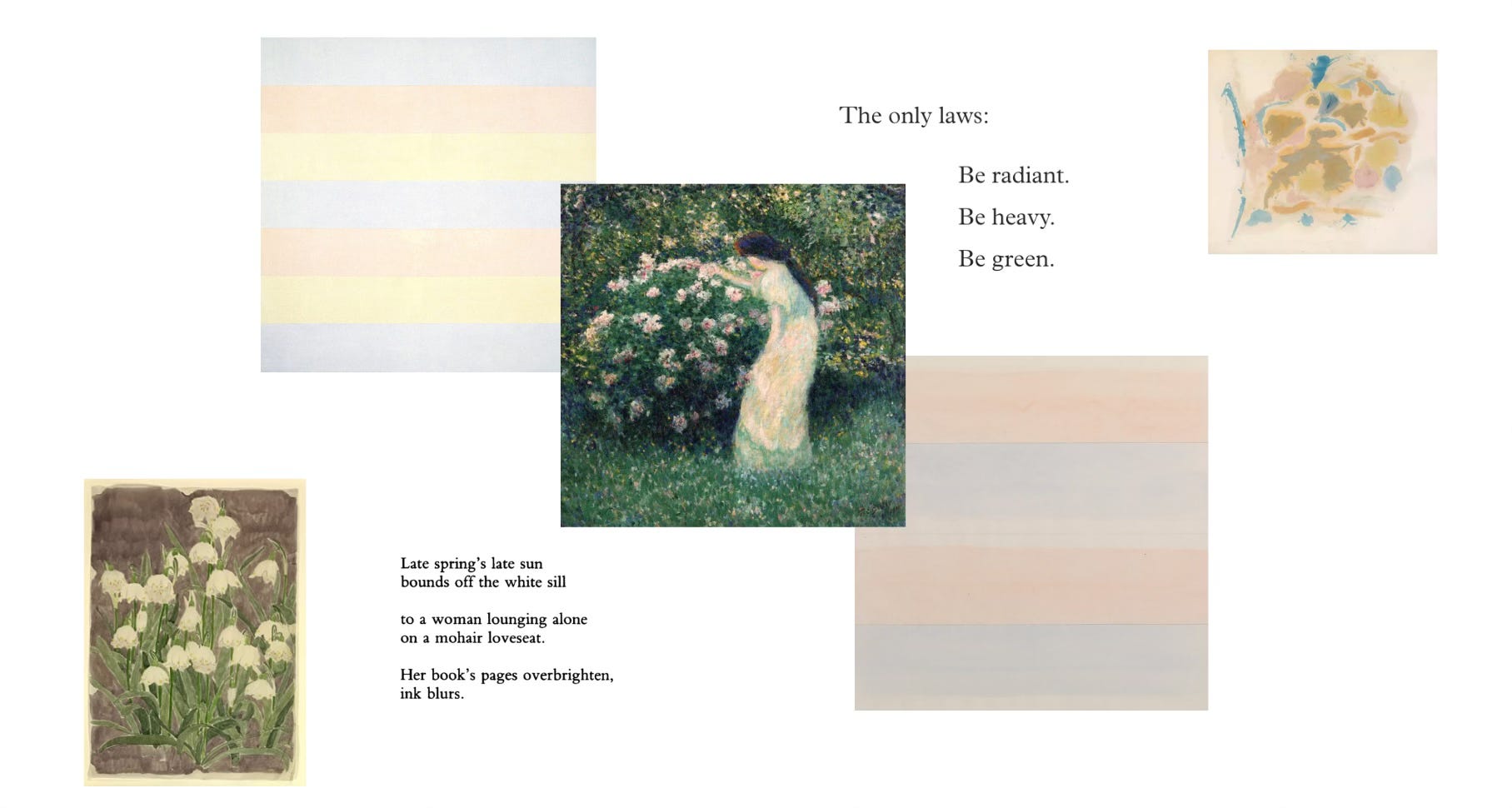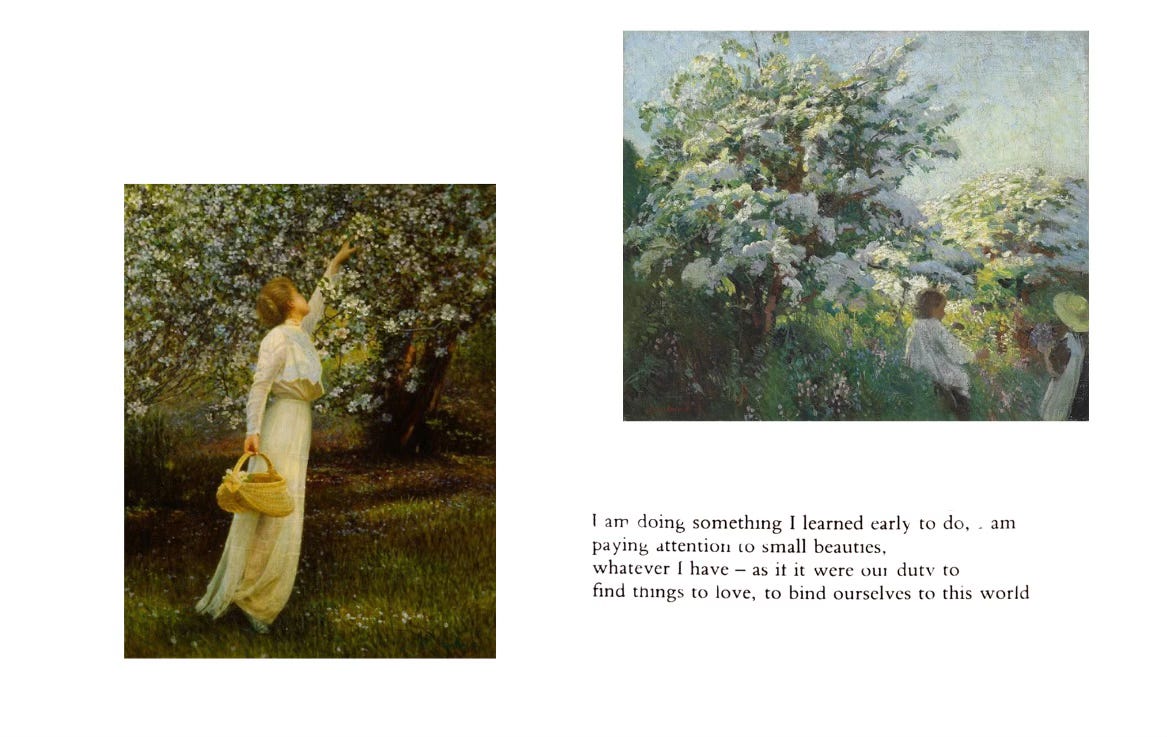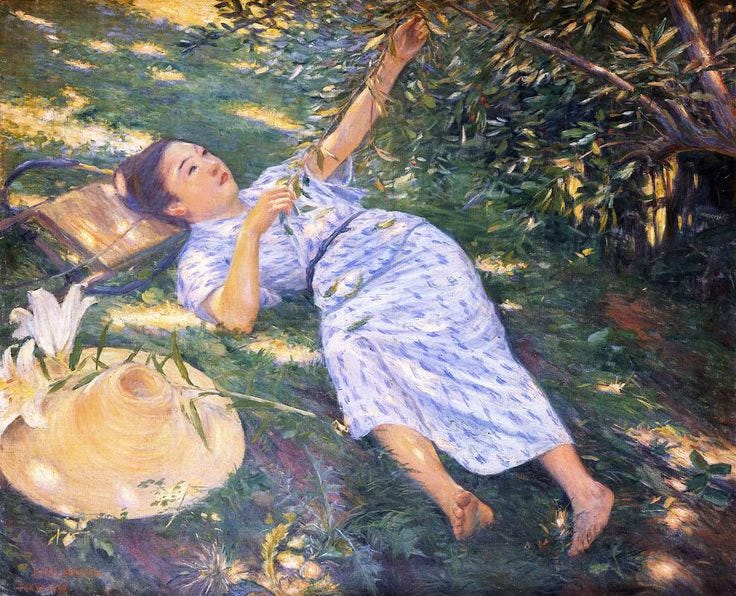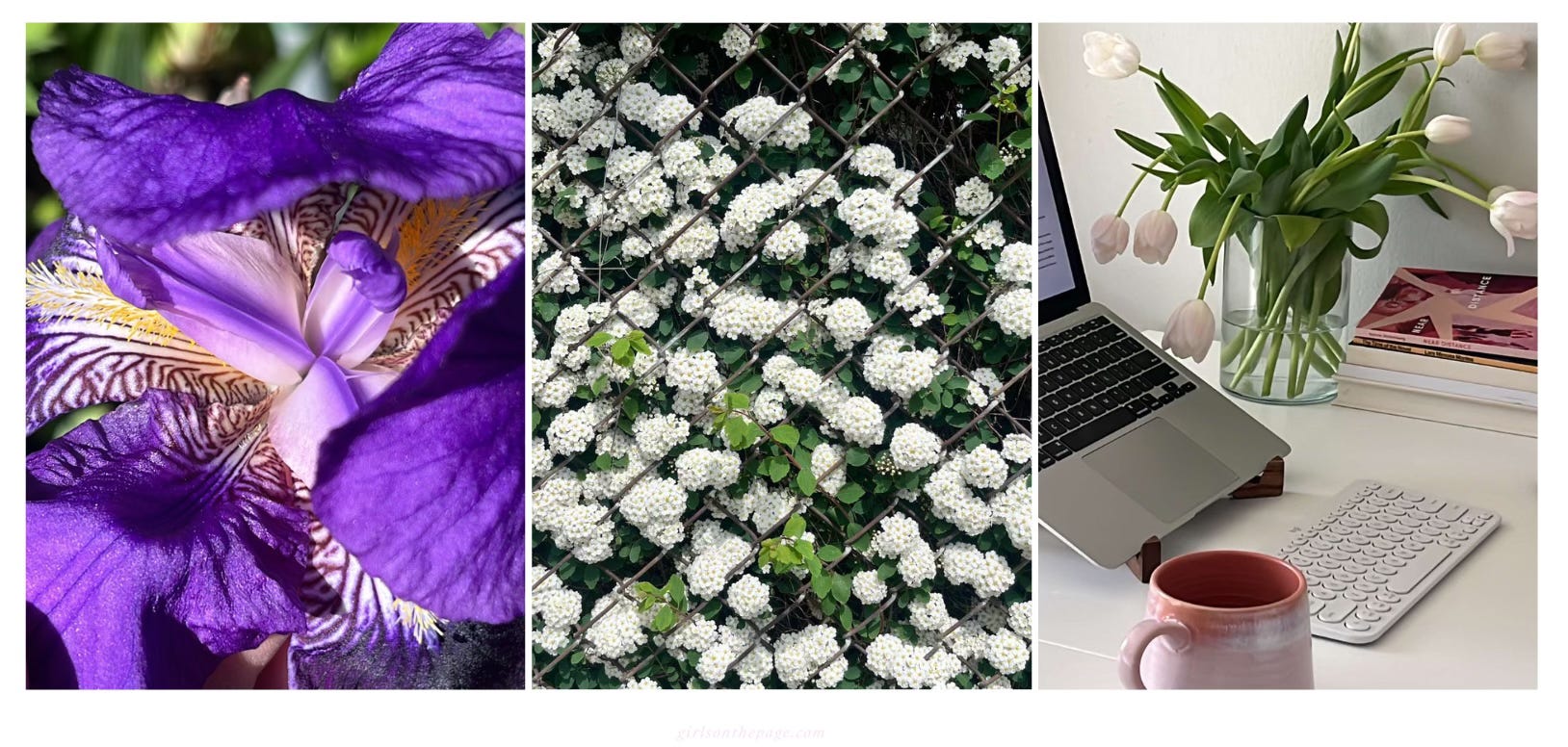
Early June and the wind carries the spirea and honeysuckle through the evening air, into my living room. This time of year feels like a settling-in, a time of reacquaintance. The lasting light. All this color. Season of plenitude. Like pulling into the driveway of your childhood home again. From here, nothing lessens.
Each time I encounter a new flower blooming, I think of course.
I remember you.
Spring is an amplification.
As we edge nearer to summer wisps of violet and tangerine straddle the horizon, petals are cast onto lawns and sidewalks like paper confetti. It seems that there are seasons within the season: one reserved for lilacs, another for poppies. The irises, long-necked and baronial, the pale color of twilight, relish in their moment before fading and making way for their successor. Next, the peonies bloom, ruched collars unfolding towards infinity.

My fiancé and I were in the car when I noticed the black locust trees in full flower. My joy was unbridled, childlike, total. Since that reintroduction I’ve been noticing them everywhere. Encountering their blossom—ornate as a chandelier earring, a scent I can only describe as sweet, like if the perfect, most still morning possessed an aroma—feels like remembering something from a forgotten dream; so much has happened between last spring and now. I forgot the way it smelled, the way it made me feel.
I think of the poem, Little Things by Sharon Olds, which goes:
I am doing something I learned early to do, I am
paying attention to small beauties,
whatever I have—as if it were our duty to
find things to love, to bind ourselves to this world.
What I know: A flower can lure you from your intended route. You can read the bark of an oak like a magazine. There is a message, a fiction, a poem, a picture waiting within the veined and blazing beard of an iris. A single bloom possesses the ability to postpone grief, cast aside life’s uncertainties, at least temporarily.
With spring comes a hyper awareness. Of all seasons, this is the one that demands the most from our senses: the varying hues, notes of laburnum riding on the breeze, a silken petal between fingertips. It is a time to look (and listen) closely. I love what Annie Dillard once said when she was discussing the writing of An American Childhood. It applies, also, to the art of observation:
“It’s about waking up. A child wakes up over and over again, and notices that she’s living. She dreams along, loving the exuberant life of the senses, in love with beauty and power, oblivious to herself—and then suddenly, bingo, she wakes up and feels herself alive. She notices her own awareness. And she notices that she is set down here, mysteriously, in a going world.”
Everywhere and by the minute, things are budding, amplifying, dying, shedding. Time moves so quickly in the spring. Someone calls you to look at the sunset and by the time you cross the room to get to the window, the color of the sky has already changed. Each day, a new shade of green reveals itself from the boughs. Wildflowers appear along the banks of the river, where for hundreds of years they have known the way.
As I was walking home one evening, a woman ahead of me paused to smell the lilacs. She barely stopped moving, merely slowing to curl the branch to her nose, like pressing an oxygen mask to her face. A swift and necessary action. Something about witnessing this filled me with joy and admiration. In her essay Beauty is the Mystery of Life, Agnes Martin writes, “We respond to beauty with emotion. Beauty speaks a message to us. Happiness is being on the beam with life – to feel the pull of life.”
And I’ve been feeling it lately, this resplendent spring, in all things. The pull of life.







Beautiful prose
This was so so gorgeous!! I love that poem!